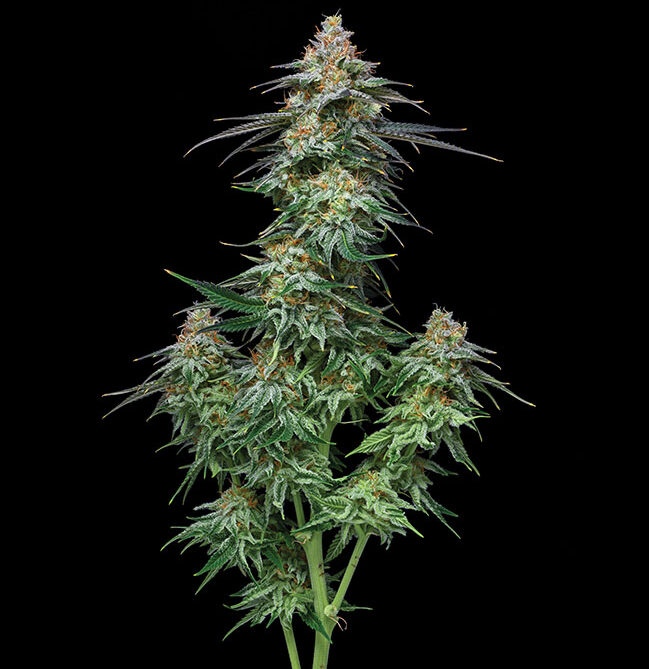
Features
Business
Cultivation
Production
Exploring strategic partnerships between LPs and cannabis breeders
December 6, 2022 By Nick Sosiak
 Fresh terminal bud grown by the team at Cannara.
Photo courtesy of Cannara Biotech
Fresh terminal bud grown by the team at Cannara.
Photo courtesy of Cannara Biotech For now, and the foreseeable future, genetics are key to propelling cannabis brands and businesses to the next level.
Cannabis as an agricultural crop has a wide breadth of variability related to its bred genetics and growth environments. When controlled properly, these varieties or cultivars offer a multitude of sensorial experiences that seasoned consumers actively seek out, exploring new tastes, effects and overall experiences.
LPs may approach cannabis production using specific CPG tactics to be successful, but I believe a more critical element of success lies in cultivation and the natural properties of the plant itself.
The breadth of genetic variation encourages exploration and differentiation not found in many other industries. For this reason, I don’t believe cannabis will always be commoditized because consumers continue to seek out nuanced products to evolve their personal relationships with the plant.
For now, and the foreseeable future, genetics are key to propelling cannabis brands and businesses to the next level. However, it is not as simple as choosing any genetic (branded or not) and believing you will succeed; there are other factors to consider, like building a partnership between plant breeder and LP.
Phenohunting is long, complex & not guaranteed
The possibilities involved in breeding and genetic creation informs its complexity, where a brand’s kneejerk reaction in hopes of capitalizing off a new consumer trend or insight will not be achieved by simply planting a seed.
Take, for example, a genetic such as Runtz — currently a hot genetic on the market. When trying to cultivate a particular Runtz genetic from seed, producers will notice various expressions even within the same seed pack due to genetic variability. Producers must then plant many seeds of a single genetic to find the right phenotype that works for them and the consumer.
The “phenohunt” — finding the right phenotype of a genetic to assure market success — is lengthy, taking over nine months to complete, and is not guaranteed. In addition to time, there are cultivation costs and the opportunity cost of using grow space for non-revenue generating crops.
Furthermore, each phenotype will require different environments to thrive, and will also express themselves differently depending on the environment. Once you’ve found one that works in your grow, maintaining consistency is key.
Since cannabis consumers differ from many CPG consumers, wanting variety and top shelf quality, LPs must continuously repeat the phenohunt process, costing more time and money, and finally, by the time you grow out and perfect your Runtz cultivar, the consumer has most likely moved on to the next hot new genetic.
Breeders & their genetics set industry trends
Cannabis is a versatile plant. Early on, I noticed pioneers in the U.S. marketplace taking advantage of the opportunity to build their name and skillset in genetic breeding. They developed proprietary genetics and carved out their presence in the industry with a following to vouch.
As the market evolved, new cannabis cultivators entered the space and began competing, saturating the market, and forcing consumers to navigate their buying decisions based on the reputation of the breeder or brand, rather than the cultivator.
Successful breeders who partnered with experienced growers have created a significant following in the industry — setting trends and influencing purchasing behaviours. For this reason, I always urge LPs to listen closely to experienced breeders, to constantly stay on top of genetic trends and opportunities, and to invest wisely in the phenohunt process.
For the previously stated reasons, I believe it’s extremely important for licensed producers to be ahead of the curve when focusing on the cultivation and development of premium dried flower products. One way this can be done is by partnering with cannabis breeders.
Securing a licensing arrangement to use a breeder’s brand, and gain knowledge and insight into their curated genetics, can absolutely help a cannabis brand pull ahead of their competition. Partnering with a breeder can also significantly reduce the phenohunt process and cut down time spent testing to only those specific genetics proven successful through previous trial and error.
Finding a cannabis breeder that develops their genetics under similar conditions as your current grow operation will help eliminate some of the variables met by underexperienced phenohunters. And the involvement in trend setting in this dynamic industry only enables further brand, breeder and grower recognition, in addition to synergizing top talent across the market for the betterment of the industry and the gene pool at large.
Nicholas Sosiak is a chartered professional accountant. As CFO of Cannara, he is responsible for overseeing the finances, treasury and is a key decision maker in the company. Prior to working in cannabis, he practiced auditing at two of the big five accounting firms.
Instagram handles:
Print this page